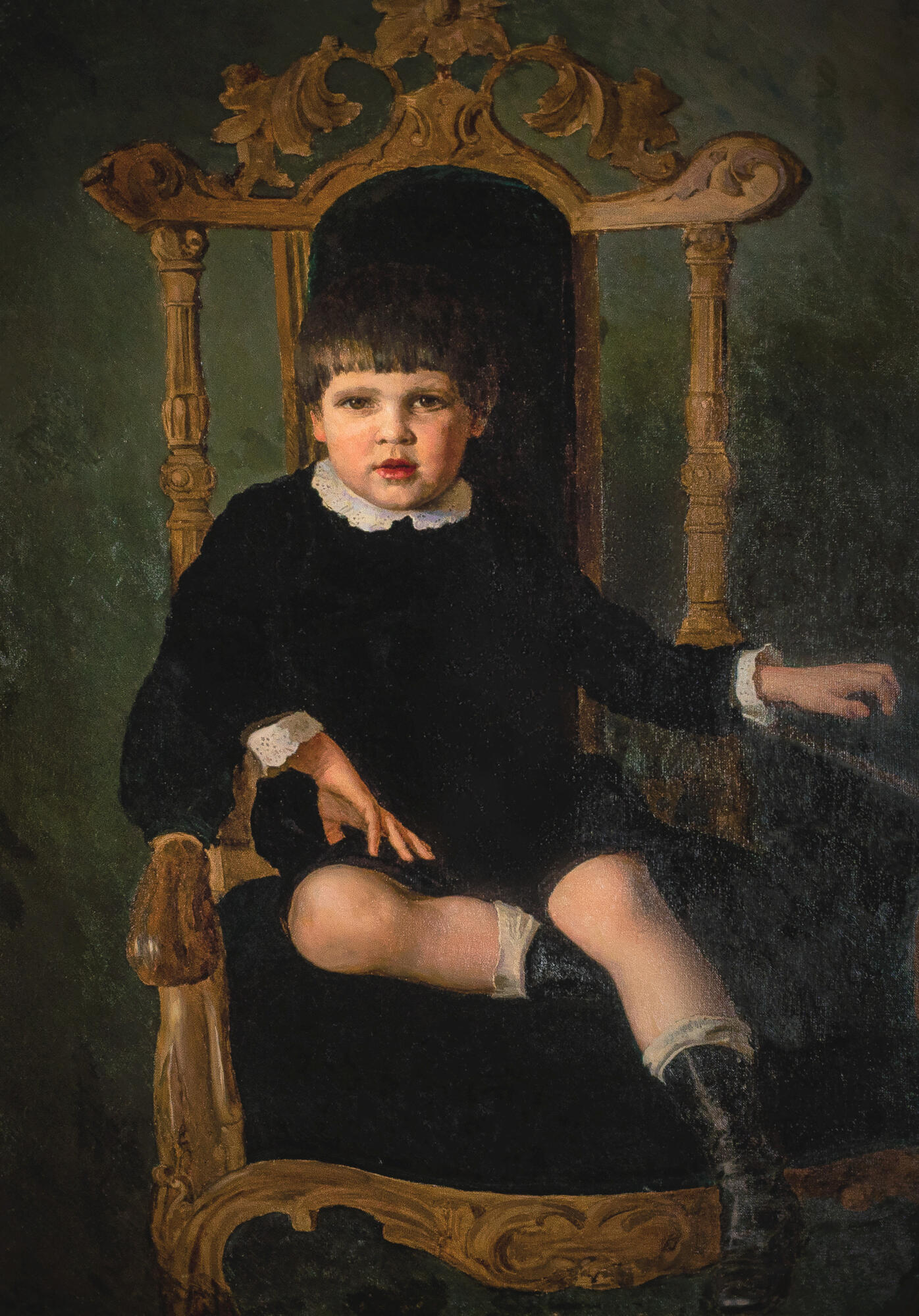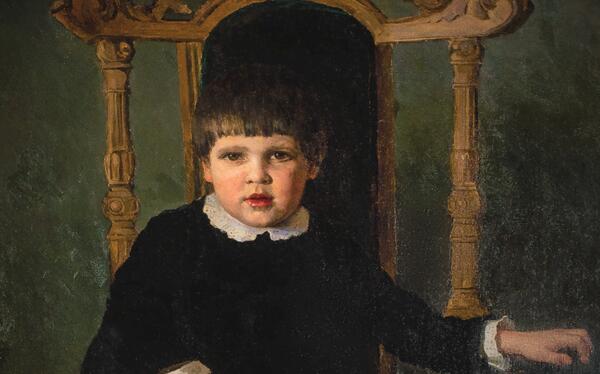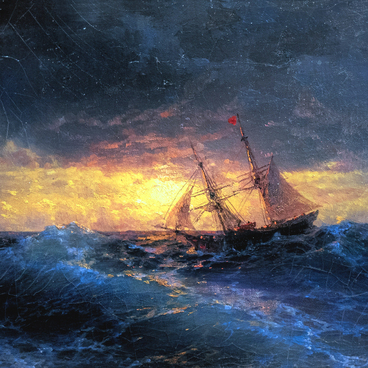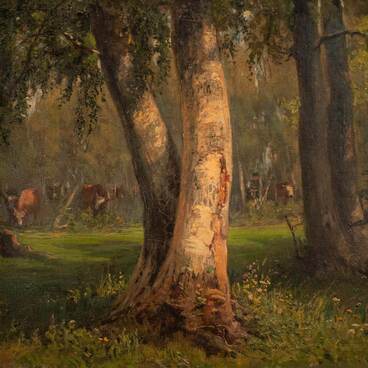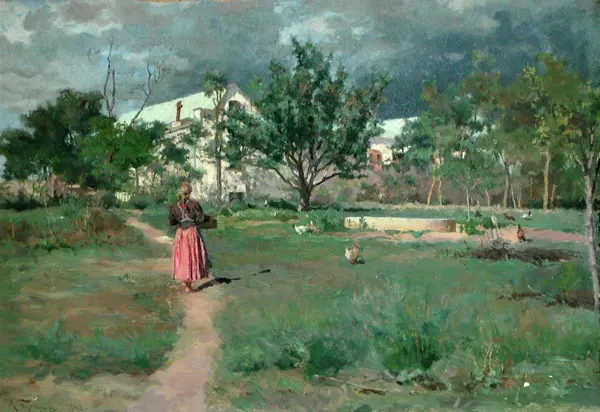The museum’s collection contains the painting “Portrait of a Boy” by the 19th-century artist Nikolai Kuznetsov.
Kuznetsov was born on December 2, 1850, in the Stepanovka estate of the Odessa district of the Kherson province. The future artist received his primary education at the Odessa gymnasium, however, he was not interested in further studies. In the 7th grade, he left school and returned to the village, where he led the free life of a carefree child from a noble family.
His mother, Klavdiya Kuznetsova, discovered that her son had a penchant for drawing and took him to Odessa to visit a family friend, artist Friedrich Malman, one of the best teachers at the local drawing school. However, painting did not become Nikolai Kuznetsov’s priority: his favorite pastime was hunting, which took a lot of his time.
At the age of 26, Nikolai Kuznetsov moved to St. Petersburg. He tried to enlist in the Guards Uhlan regiment, but he did not manage to get an appointment with the commander of the Uhlans, Baron Nicholas Essen.
In St. Petersburg, Kuznetsov attended traveling art exhibitions, returned to painting and entered the Imperial Academy of Arts. For his works, he was awarded three silver medals. The painter presented his paintings at exhibitions of the Itinerants.
Kuznetsov’s works are kept in large Russian museums. The State Tretyakov Gallery contains his paintings “Hunting with Greyhounds”, “After Dinner”, “Housekeeper”, as well as portraits of Ilya Repin, Viktor Vasnetsov, Pyotr Tchaikovsky and others.
The artist himself more than once became the prototype for characters in paintings. For example, he posed for Ilya Repin as an executioner for the painting “St Nicholas of Myra Saves Three Innocents from Death” and a Cossack with a bandaged head for “Reply of the Zaporozhian Cossacks” (“The Cossacks”).
Kuznetsov’s ‘Portrait of a Boy’ from the museum’s collection was first shown to the public at the 9th Exhibition of the Itinerants in 1881. The picture demonstrates the artist’s very serious and attentive attitude towards the child, far from the sugary perfection characteristic of the works of many painters of that time.
Previously, the canvas was considered a portrait of the artist’s son. However, art critics have found out that the painting depicts a certain Boris Deryagin. The work was kept in a private collection, but the owner did not know anything about the person depicted. According to one of the assumptions, the painting portrays the future chemist Boris Deryagin. A copy of this portrait was kept in the collection of the State Tretyakov Gallery, but during the Soviet years, it was transferred to Ashgabat, to the State Museum of Turkmenistan.
Kuznetsov was born on December 2, 1850, in the Stepanovka estate of the Odessa district of the Kherson province. The future artist received his primary education at the Odessa gymnasium, however, he was not interested in further studies. In the 7th grade, he left school and returned to the village, where he led the free life of a carefree child from a noble family.
His mother, Klavdiya Kuznetsova, discovered that her son had a penchant for drawing and took him to Odessa to visit a family friend, artist Friedrich Malman, one of the best teachers at the local drawing school. However, painting did not become Nikolai Kuznetsov’s priority: his favorite pastime was hunting, which took a lot of his time.
At the age of 26, Nikolai Kuznetsov moved to St. Petersburg. He tried to enlist in the Guards Uhlan regiment, but he did not manage to get an appointment with the commander of the Uhlans, Baron Nicholas Essen.
In St. Petersburg, Kuznetsov attended traveling art exhibitions, returned to painting and entered the Imperial Academy of Arts. For his works, he was awarded three silver medals. The painter presented his paintings at exhibitions of the Itinerants.
Kuznetsov’s works are kept in large Russian museums. The State Tretyakov Gallery contains his paintings “Hunting with Greyhounds”, “After Dinner”, “Housekeeper”, as well as portraits of Ilya Repin, Viktor Vasnetsov, Pyotr Tchaikovsky and others.
The artist himself more than once became the prototype for characters in paintings. For example, he posed for Ilya Repin as an executioner for the painting “St Nicholas of Myra Saves Three Innocents from Death” and a Cossack with a bandaged head for “Reply of the Zaporozhian Cossacks” (“The Cossacks”).
Kuznetsov’s ‘Portrait of a Boy’ from the museum’s collection was first shown to the public at the 9th Exhibition of the Itinerants in 1881. The picture demonstrates the artist’s very serious and attentive attitude towards the child, far from the sugary perfection characteristic of the works of many painters of that time.
Previously, the canvas was considered a portrait of the artist’s son. However, art critics have found out that the painting depicts a certain Boris Deryagin. The work was kept in a private collection, but the owner did not know anything about the person depicted. According to one of the assumptions, the painting portrays the future chemist Boris Deryagin. A copy of this portrait was kept in the collection of the State Tretyakov Gallery, but during the Soviet years, it was transferred to Ashgabat, to the State Museum of Turkmenistan.
